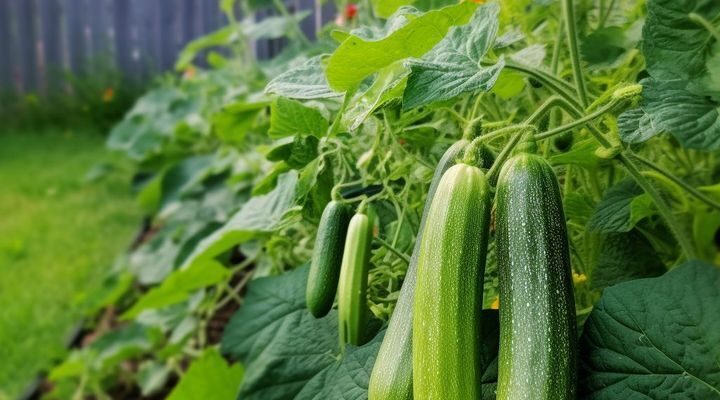|
Crisp, juicy, and packed with flavor, cucumbers are a favorite vegetable for many gardeners. There’s something incredibly satisfying about growing your own cucumbers and being able to enjoy their bounty straight from the vine. Whether you have a sprawling backyard garden or a few containers on your balcony, this step-by-step guide will walk you through the process of cultivating bountiful cucumbers that will elevate your salads, sandwiches, and pickling endeavors to new heights.
From selecting the right seeds to nurturing the plants through each stage of growth, we’ll cover everything you need to know to ensure a successful cucumber harvest. Discover the joy of tending to these versatile and refreshing vegetables as we delve into the intricacies of planning and preparation, germination, transplanting, watering and fertilizing, pruning and training, pest and disease management, as well as the art of harvesting and savoring your homegrown cucumbers.
ADVERTISEMENT
Step 1: Planning and Preparation
Before you start planting cucumber seeds, it’s essential to plan and prepare your garden or containers. Select a sunny location that receives at least 6-8 hours of direct sunlight per day. Ensure the soil is well-draining, rich in organic matter, and has a pH level between 6.0 and 7.0.
Step 2: Seed Selection and Germination
Choose cucumber seeds that are suitable for your climate and desired variety. You can find various cucumber types, such as slicing cucumbers for fresh consumption or pickling cucumbers for canning. Start the seeds indoors about 3-4 weeks before the last expected frost date. Plant the seeds in seed trays or small pots, keeping them moist and warm (around 70°F or 21°C) for germination to occur.
Step 3: Transplanting Seedlings
Once the danger of frost has passed and the soil has warmed up, transplant the seedlings into your prepared garden or containers. Space the cucumber plants about 12-24 inches apart, allowing ample room for the vines to spread. Make sure to provide sturdy supports, such as trellises or stakes, for the plants to climb on.
Step 4: Watering and Fertilizing
Cucumbers require consistent moisture to thrive. Water the plants deeply, providing around 1-2 inches of water per week. It is best to water at the base of the plant in the morning to allow the foliage to dry before evening. Mulching around the plants can help retain soil moisture and suppress weed growth. Additionally, fertilize the plants with a balanced fertilizer every three to four weeks to promote healthy growth.
Step 5: Pruning and Training
As your cucumber plants grow, they will produce long vines. To maximize productivity and make harvesting easier, consider pruning and training the plants. Pinch off the lateral shoots that develop in the leaf axils, focusing the plant’s energy on fruit production. You can also guide the main vines along trellises or stakes, allowing them to climb and save space in your garden.
Step 6: Pest and Disease Management
Keep a close eye on your cucumber plants for any signs of pests or diseases. Common cucumber pests include aphids, cucumber beetles, and spider mites. Regularly inspect the foliage and treat infestations promptly using organic insecticides or homemade remedies like neem oil or soapy water. Proper spacing, adequate airflow, and avoiding over-watering can help prevent fungal diseases like powdery mildew.
ADVERTISEMENT
Step 7: Harvesting and Enjoying
Cucumbers are typically ready to harvest within 50-70 days, depending on the variety. Pick them when they reach the desired size and color, usually before they turn yellow. Use a sharp knife or shears to cut the cucumbers from the vine, being careful not to damage the plant. Regularly harvesting ripe cucumbers will encourage the plant to produce more fruit. Enjoy your freshly picked cucumbers in salads, sandwiches, or even try your hand at homemade pickles.
|
Easily grow healthy cucumbers with this step-by-step guide




